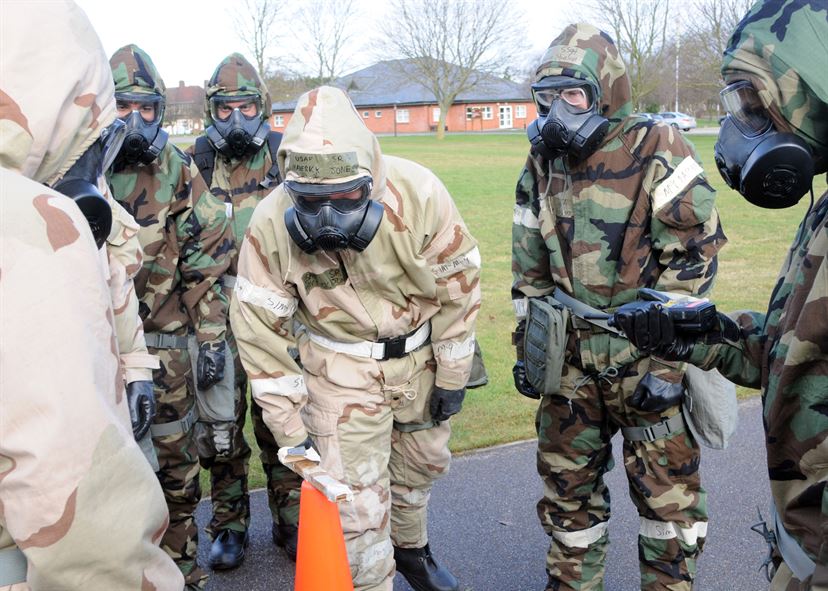
The 2002 science fiction thriller
28 Days Later, depicting the effects of an outbreak of a virulent genetically engineered plague, was described as the first great apocalyptic movie of the new millennium. The film’s narrative revolves around the idea of science out of control or possibly mismanaged.
Beyond accidental release, the use of chemical and biological (CB) materials against individuals and communities has a long history and appears to be on the rise. Scenes such as the suspected chemical attacks in Syria have opened our eyes to the reality that groups are seeking to acquire, manufacture and deploy these substances to intentionally cause harm.
Since 2001, a number of CB incidents have drawn worldwide attention, including
anthrax in the US mail system,
ricin-laced threat letters, well-documented
assassinations with polonium-210, and the
use of nerve agents and mustard gas in Syria and Iraq.
But do we, as a nation, really have our eyes open to the reality of the threat? Are we doing enough at the operational and strategic policy levels to identify vulnerabilities and strengthen communities and national safety?
In 2014,
ISIS posted a video urging its followers to poison Westerners through food or water, in addition to using vehicles as weapons. This time-stamped a string of terrorist attacks and threats across the globe, outlined in several news outlets. Countries such as Germany, France, England, Turkey and Indonesia took steps to prepare for such atrocities.
In March this year the
UK intelligence community expressed mounting concerns that ISIS affiliates were planning to produce and use ricin and anthrax in the UK, targeting food and water supplies.
Recent police raids in Cologne, Germany, have uncovered evidence of a plot to acquire and manufacture ricin with a clear intent to cause harm in a terror-related attack.
That the street finds a use for new technologies and that ‘the dark web’ is a viable means of bringing vendor and client together should be ringing seriously loud warning bells.
The capability to acquire the materials, equipment, information and expertise to manufacture super-toxic materials was once the domain of national programs. A concern for Australia, and of course globally, is that it’s becoming easier to get precursor materials and to find information on how to create toxic substances that can be used as weapons.
We need to improve our understanding of the nature and potential use of these materials and information in the wrong hands.
Let’s consider an example. The potent biological toxin ricin is derived from the seeds of a plant that grows wild in Australia and many other parts of the world. There’s no treatment that can reverse the effects of exposure to it and it’s easier to make than methamphetamine.
Ricin can be produced for a relatively small outlay, using household appliances and store-bought equipment. It would be relatively easy, for example, to manufacture enough toxin to kill a group of conference attendees through a free buffet. The deliberate nature of such an attack could go undetected for hours or even days.
Are relevant Australian agencies ready for that scenario? In the absence of more regulation and restrictions, agencies need to be able to recognise the early warning indicators of a deliberate CB attack and act before it occurs or is repeated.
Finding a needle in a haystack is always easier in retrospect. Australian policing and intelligence agencies, along with relevant biosecurity and regulatory agencies, need to apply as much joined-up capability as possible to detect, protect against and respond to threats before any harm can be done.
One challenge is that, unlike most toxic chemical agents, the release of biological or radioactive materials may go unnoticed for days or even weeks. The public and
animal health surveillance systems will be important for alerting agencies to the occurrence of something unexpected.
Such an event would have cascading effects on the community, its infrastructure, economy and psychological wellbeing.
Instead of preparing for the unthinkable, we should focus on developing and strengthening the systems and networks that will ultimately be required to detect, respond to and recover from intentional uses of CB materials. We need to have eyes ‘wired’ open to real and rapidly advancing threats.
 Print This Post
Print This Post